"Positive masculinity" is just femininity. The fact that we can't say that IS the problem.
Is the positive masculinity movement a necessary step in the right direction? Or is it impeding progress by neglecting to address the very heart of the issue?
Disclaimer: I talk about “masculinity” and “femininity” a lot in this article. I don’t believe these are a set of biologically set traits, but shifting societal norms.
I’d actually rather not talk about masculinity or femininity. I’d much prefer every trait be labeled a human trait instead of divided into “masculine” and “feminine” boxes.
And while this essay focuses on only two genders, I recognize that gender is a spectrum, not a binary.
However, we can’t move into de-gendering human traits without acknowledging the binary-boxed gendered mess that currently stands in the way from getting there. So I will be talking about those boxes, but only to illuminate our roadblocks to gender freedom and equality.
I’ll generally be referring to these terms according to how Wikipedia currently defines them:
masculinity = strength, courage, independence, leadership, dominance, assertiveness.
femininity = gentleness, empathy, humility, nurturance and sensitivity.
In her book BoyMom,
goes to visit a “failure to launch” program for young men ages 15-30. They can stay at the facility for three months.When Whippman interviewed the leader of the program, Cade, and asked him why he thinks so many men are struggling, he said it is due to “a steady onslaught of the de-masculinization of society.”
He believes that America has become too feminized, that “traditional masculinity is under attack” and must be brought back. He believes men and boys have “become neutered and adrift.”
“There is a dark fear among conservatives that America has been emasculated. America is becoming weak and effeminate (it goes without saying that effeminate is a bad thing).” - Ruth Whippman, BoyMom
But as Whippman spent the next few days at this facility attending their sessions and interviewing its participants, she couldn’t help but notice that for a program whose entire purpose is to push more traditional masculinity, it was actually doing the exact opposite.
“It's an odd disconnect. For all of Cade's talk about the need to restore traditional manhood and the importance of masculine values, there actually seems to be very little of that kind of thing here. Since I arrived there seems to be almost nothing that I have seen in the program that is identifiably masculine - no feats of physical strength or toughness, no advice to man up, be more stoic or suppress their emotion, no aggression. In many ways masculinity seems to be the opposite of what Cade is offering.
The parts of the program that seems to be helping these young men the most, if we can label them as gendered rather than simply human, seem not to be traditionally masculine at all, but instead drawn directly from the playbook of female cultural norms--relationship building, emotional openness and vulnerability, a sense of community.
If anything, the vibe at Iron Gate, with everyone gathered in the kitchen or around the dining room table, sharing snacks and feelings, reminds me more of a girl's slumber party.” - Ruth Whippman, BoyMom
*quick note: BoyMom is the next book we will be discussing in our Matriarchal Blessing discussion group held next month on zoom. You should absolutely read it and join us!
Cade’s program is helping men open up, be vulnerable, create friendships and contribute to community in healthy ways.
He’s just very careful to label all of these skills “masculine.” He calls it positive masculinity.
But as
says, “Positive masculinity is just femininity. Men were always allowed to be nice … The only thing gender never allows a man to be is feminine.”The young men report that the program is helping them.
So what’s the problem?
Is there something wrong with the fact that in order for men to do something it must first be labeled “masculine?”
bUt mEn CaN’T bE fEmiNinE!!!!
I’ve noticed that when it comes to gender discussions, most men agree we should foster more healthy relationships for men.
They are on board with having more access to community. They want love, friendship and strong connections.
We’re all one happy team on these points.
But the very second that you mention that the way to get there might involve embracing some feminine-coded skills like vulnerability, compassion and emotional openness…
Op.
You’ve lost them. Especially if you use the word “feminine.”
No no no no no no no no no no! They say. Feminine qualities are the LAST thing they need!
They need MORE manliness! MORE masculinity! NOT LESS!
WE ALREADY HAVE WOMEN, WE DON’T NEED MORE WOMEN! They shout.
On the podcast I discussed last week, Scott Galloway said, “You can’t just expect men to be more like women. That will never be the answer.”
Even men who otherwise usually agree with me tell me, as someone did last week, “I’m all for men being more healthy, but we have got to stop asking them to be feminine.”
As a paid subscriber to Ruth Whippman’s1 Substack, I attend her monthly zoom discussions on masculinity whenever I can.
In a recent discussion a man said men need accountability and growth, but absolutely draws the line at the idea that men should be more like women. He got a little huffy as he said, “Trying to make men more effeminate will never work. It’s the wrong message. It will never happen. The left absolutely must drop this nonsense.”
I understand the issue with this message on the level of practicality. I understand that men feel lost without their own terrain. I get that I would have a similar reaction if I had faced a lifetime of bullying and ostracization whenever I acted like a girl. But the fact that even the slightest suggestion that men should move even a centimeter towards femininity enrages, terrifies and repels men (even liberal men), hints at the heart of the issue.
Minutes ago while writing this, I received a message from a man informing me that I’m well-intentioned but wrong when I spread the message that men should be more ok with femininity. He told me that men desperately need access to man spaces that aren’t feminized.
Yet as we saw with Cade’s program, men seem to be ok with spaces that meet all the benchmarks of “feminine,” so long as there aren’t any women there and so long as you don’t call it feminine. Then they are on board. Then it’s “positive masculinity.”
But is refuting and rejecting any semblance of femininity really making masculinity more positive?
Is positive masculinity a necessary step in the right direction or is it impeding progress by neglecting to touch the very heart of the issue?
An analogy of crayon supremacy
During another one of Whippman’s discussion groups, a woman on the call told the story of talking to her husband about how men are cut off from half their humanity—the feminine half. A little defensively her husband replied, “So… what I’m only half a human? And you’re a whole human? Good for you?”
Someone else on the call offered this helpful metaphor in response: Let’s say we are all crayon boxes. It’s not that men are born with half the crayons in the box and women are born with all of them. We are all born with all of them—the capacity to be both confident and humble, independent and communal, tough and soft.
But in our culture, boys and men have had half the box duct-taped off with “danger” signs written across the tape, their wrists slapped when they try to color with pink and purple crayons. Care takers, peers, media and bullies alike stand as bouncers to ensure boys learn from a very early age that these traits are neither desirable nor safe for them. Punishments for accessing the restricted area are swift and frequent.
Cue the movie montage:
"You play ball like a GIRL!" - The Sandlot “What are you, McFly? A girl?” - Biff, Back to the Future “Don’t be such a girl, Milhouse.” - Bart from The Simpsons "I'm not gonna cry, OK? I'm not a girl.” - Michael Scott, the Office “What are you, a bloody girl?” - Billy Elliot All said with a venomous sneer to stunned on-lookers. The lowest blow. The absolute worst insult for a boy or man is to be called a girl.
Not a real head-scratcher then why so many men have a knee-jerk reaction to reject any message that they should move towards the very thing they’ve been so punished for their whole lives.
But conditioning half the population away from care and compassion is anything but healthy.
If positive masculinity programs help men access the full box of human traits, this is wonderful and this should be celebrated.
And if this were the whole tale, then I would not be writing this article.
The positive masculinity movement’s tactic for removing the caution tape is to re-label the “feminine” half as “also masculine.”
Problem solved right?
Questions of effectiveness aside, if the taping off of the healthy “feminine” traits were the only problem, then yes this could be a fitting solution.
But it is not the only problem.
There is another issue, potentially an even bigger issue, that goes completely unaddressed here: masculinity sits atop a hierarchy above femininity.
Which maaayyybe we could side step with the “it’s all masculine” magic wand. (If that worked). But we’re not just talking about “masculine” above “feminine” traits, we are also talking about men above women.
We are talking about supremacy, dominance and inequality.
The real reason to doubt the “positive masculine” movement’s effectiveness is that it does nothing to challenge this hierarchy of men over women. In fact, it reinforces it.
And this hierarchy is anything but healthy for men or women.
Whippman said it perfectly when she said,
“If we have to attached the label “masculine” to a behavior before it can have value to men, we’re still buying into the basic gender hierarchy in which male is superior and female is lesser and giving weight to the idea that a man embracing anything feminine is a humiliation.”
Can masculinity ever be positive without addressing the gender hierarchy?
In BoyMom, Whippman cites a program set up by the Society for the Psychological Study of Men and Masculinity with the stated goal of “preserving the positive in traditional masculinity while jettisoning the bad parts.”
Positive masculinity tries to rid masculinity of its “toxic” parts while still upholding supremacy and dominance.
But supremacy IS what makes masculinity “toxic.”
DOMINANCE IS THE BAD PART!
If you strip every problematic manifestation of “toxic masculinity” to its root, you’ll find the sneaky face of dominance and inequality there every time.
The need for dominance stands at the heart of:
War.
Violence.
Rape. The allure of rape is not merely ejaculation. There are many easier, far less risky ways to achieve that. The allure of rape is domination.
Male entitlement. Men feel entitled to women because they see themselves as above women.
Homophobia. As Madeline Miller brilliantly put it in The Song of Achilles, “Our men like conquest. They do not trust a man who was conquered himself.”
Why men have such a hard time making friends and why male friendship is often so competitive—they need to dominate to feel strong.
Why bell hooks and Terry Real say that men are not conditioned to be good romantic partners—they need to dominate to feel good about themselves and domination is antithetical to love.
Why being “friend-zoned” is the worst insult to a man—there is no dominance in friendship, only equality, and what’s the point in that?
Why men are struggling so hard with women’s equality. They are losing the thing they’ve been conditioned to hang their self-worth on- dominance.
Why every marriage book written by a man says men need “respect.” Respect is code for “need to feel dominant.” They must feel that their wives “respect” their husband’s authority, opinions, time and desires above their own.
Why men don’t want “slutty” women. What’s the fun in dominating someone whom dozens of men have already dominated? It’s insulting to their domination skills.
Why virgins are the top prize. First to dominate. Uncontested domination.
Why so many men are so obsessed with turning back the clock on women’s rights. They want to return to a time when their dominance was more clear and less disputed.
Why boys don’t want to go to college. When boys dominated college, most wanted to go. When girls started dominating, the boys dropped out.
Why the most desirable woman has always been extremely young for men of all ages. The younger the girl, the easier to dominate.
Our culture does a MASSIVE disservice to boys when we tie their self-esteem to their ability to dominate, but we do it constantly. Unthinkingly.
Everything we put in front of boys is a quest for dominance- its the plot of every show, movie and book marketed to boys. All their favorite past times—sports, video games, board games— all have domination as their primary goal.
Tying a man’s self-esteem to his ability to dominate is the LEAST healthy thing we can do for a man and for everyone else in his life and the world.
Men are human. Humans need deep connection. Humans need community. They need both to love and to be loved, but as bell hooks teaches, “There can be no love when there is domination.”
“To know love, men must be able to let go of the will to dominate.”
How effective can a movement to help men be if it doesn’t touch men’s biggest barrier to love?
It’s not just the external hierarchy of men above women that’s the problem here, it’s how that hierarchy infiltrates men’s internal world. The inner world that shames them every time they want to act even slightly “like a girl.”
One man helpfully wrote out his inner dialogue of shame he had to wade through before he allowed himself to even click a “like” button on a feminist article I wrote:
"…As I moved my thumb to 'like' this post, I found myself hesitating, my thumb hovering millimeters away from the heart icon in the lower left corner.
As I paid closer attention to this moment of hesitation, I discovered a dude lurking in the recesses of my consciousness, warning me away, threatening me if necessary, to avoid being seen as some sort of kiss ass, or cuck, or traitor.
Even as I write this post, he shakes his head in disappointment. They'll be coming for you, he says, any time now. You should've kept your head down and your mouth shut.
I'm a man who likes women. I'm a man who fears being seen as less than a man. These primal and cultural forces war within me...."
We can’t help men without addressing shame. And we can’t adequately address shame without addressing its most repeated message: that it is shameful to act feminine. It’s shameful not to dominate.
This is the core of the men’s loneliness epidemic, the core of men’s struggles, the core of men falling behind, the core of the lack of care so prevalent in our world.
Instead of correcting domination, positive masculinity confirms it. It says- you are right, acting feminine is very shameful. It is beneath you. This is why instead of de-stigmatizing the feminine, we will move heaven and earth to de-feminize your world.2
The anti-dote to the misery of destructive domination is gender equality. Not just in legislation, not just in the work place and religion, but perhaps most importantly, IN MEN’S MINDS!
Only when men actually see women as equal to men can they overcome the deep shame they feel any time they act “girly.”
Only by conquering this shame in men’s minds will we ever have a hope of dealing with men’s loneliness, depression, violence, rape, and inequality.
Researcher Ronald Levant has been studying men and men’s struggles for 30 years. He has over 200 peer reviewed articles on the subject. He says the answer to men’s loneliness, violence and self-destruction isn’t to try to reframe masculinity, it’s to de-throne masculinity as the most important thing a boy can be.
He says the best thing we can do is to teach boys that masculinity is not obligatory. (Positive masculinity teaches exactly the opposite- masculinity is so obligatory that before you adopt anything it must first be called “masculine.”)
Levant doesn’t avoid discussing the shame of being seen as feminine- he addresses it head on:
“I would say to men who might be listening who might have some of these issues, we have to brave the shame. We were made to feel ashamed of ourselves for not being fully masculine, and that was nonsense. If you're married, if you have children, you have to learn how to open up your heart to your family, to really let them in, to take the barriers down. You can do it. It's not easy, you will feel bad about it, you might feel ashamed of yourself. But honestly, those lessons you learn as a child are not valid, and a better approach is to have an open heart and an open mind and to freely express your emotions to the people you care about.” - Ronald Levant
We cannot diminish the shame that keeps men trapped in domination pursuits without touching the gender hierarchy that teaches it.3
If we stick with the positive masculinity route, we may unlock some of the traits men need to integrate, but without confronting the gender hierarchy, what we’re left with is benevolent patriarchy:
And we’ve tried that before.
Religion has been trying it for generations.
Benevolent patriarchy cannot be the end goal.
Since both genders must work against their conditioning to be healthy, the work of men is to lose the self and the work of women is to build the self. Religious teachings help men do this work.
Religious teachings of love, compassion, equality and freedom are effective counter-pulls to the more problematic patriarchal masculinity pressure boys and men experience in our society. Like positive masculinity, it removes some of the restrictive tape around the “feminine” half of the crayon box.
However, religious teachings don’t touch the gender hierarchy, they reinforce it, and thus are limited in their effectiveness to deal with men’s struggles.
It’s like telling men “go! be free!” and unchaining one 50 pound weight off one leg, but leaving another 50 pound weight chained to the other. It’s only a half solution. It keeps us running in circles.
I’m thinking of the religion I grew up in—Mormonism.
*warning: I’m about to say something positive about my religion of origin. This may come as a shock to long-time readers. You’ve been warned.
I actually think that Mormon male conditioning is a lot healthier for men than the average patriarchal conditioning.
Mormon men are granted more leeway in disobeying rigid masculinity norms. It’s socially acceptable for Mormon men to cry in public. The top leaders do frequently. Boys are actively taught that the most important thing to be in life is loving. They are socially rewarded for kindness, service and selflessness. They’re very nice.
Visiting my friends at other colleges while attending BYU, I noticed how much more acceptable and common it was for Mormon boys to act more effeminate than boys from other universities. You could call it positive masculinity.
However, (*long-time readers be at ease) the line of male supremacy, the power hierarchy of men over women is so stark, so all-encompassing, so untouchable, that it outweighs the healthy messages for men.4
Men may “thrive,” but they thrive at the cost of women, which really, is no thriving at all.
“Injustice anywhere is a threat to justice everywhere. We are caught in an inescapable network of mutuality, tied in a single garment of destiny.” — Martin Luther King Jr., Letter from Birmingham Jail
It makes for nice men, but entitled, dominating nice men. Mormon men are the epitome of this:
What we’re left with is the women with a deflated sense of self-importance orbiting the men with an inflated sense of self-importance. Women’s service is so expected, their self-erasure so common, that they are terrified to ever inconvenience or disappoint anyone. Especially the men. This dynamic is not healthy for the men or the women.
We’re also left with a very strict gender binary and very rigid gender roles, which is no good for anyone.
Without addressing the gender hierarchy, this is the same destination that positive masculinity is heading for.
For men to thrive, for all of us to thrive, gender equality cannot be ignored.
Benevolent patriarchy may be a step in the right direction, but it cannot be our endgame.
But how to get from here to there?
Ideally we would blur the rigid prisons of the gender binary. Ideally every trait - soft, hard, confident, humble- wouldn’t be gendered traits, they would just be human traits.
But we don’t live in an ideal world. We live in THIS world. And in this world there are about a million miles between where we are now and a land of de-gendered, equal humanity.
And for that reason, I cut the positive masculinity movement some slack.
After she came out with BoyMom, Ruth Whippman wrote an article for the New York Times entitled, “We Can Do Better Than Positive Masculinity.”
The crux of which was the same point I’m trying to make:
“If we have to attach the label “masculine” to a behavior before it can have value to men, then we are subtly communicating that embracing anything associated with women is a demotion, even an indignity. “Positive masculinity” is not about de-gendering universal human qualities, and certainly not about encouraging boys to believe that they could have something to learn from women or female cultural norms. It’s more an attempt to scrub away the humiliating stain of womanhood from any trait or behavior before letting boys anywhere near it.”5
After reading the NYT article, I came across a Reddit thread discussing Whippman’s article that I’m stilling mulling over all these months later.
The main points made in the thread were:
Whippman is expecting us to be able to run when we’re barely ready to crawl.
If we take away a positive masculine path, all masculine paths flow to something worse- Andrew Tate.
Whippman is advocating for “perfection politics”— saying good programs aren’t good enough because they aren’t perfect. Effectively pushing us to do nothing at all.
The positive masculinity movement may very well be an important stepping stone on the path towards greater equality and gender freedom.
If it is a step in the right direction, I would rather champion progress than stamp my foot and say that it’s not good enough.
That said…
I can’t help but wonder…
Is the positive masculinity movement simply an important step? Like crawling before walking? Or by neglecting to address the gender hierarchy are we making it impossible to EVER learn to walk?
Could we already be strolling along if we had addressed it generations ago? But instead we’re still effectively stalled in tummy time?
Switching analogies, are we rolling around in this mud and muck of inequality, violence, loneliness and domination when there is a pool right there in front of us where we could clean off from the muck. But instead of using it, we’ve built a 10 foot tall iron-clad fence around the pool with signs saying, “WELL OBVIOUSLY WE CAN’T GO IN THERE!!!”
MeN cAn’T bE fEmIniNe!
Let’s come up with “solution” after “solution” to try to get wash off the mud without ever touching water. Here use this dirty rag.
Obviously we can’t prioritize care, connection, community and strong relationships! ThEn wE’D bE gIrLs!!
Point being- as long as we hold onto masculinity—healthy or otherwise— as the ideal, we will continue to devalue boys and men who are less masculine. We will devalue women. We will continue to pump the minds of boys and men full of shame over the healthy human parts of themselves that they see as feminine.
As Alok says, “men get to be dominant but at the cost of literally everything else.”
As bell hooks says, “the terrible price men pay to maintain ‘power over’ us is the loss of their capacity to give and receive love.”
As Terry Real says, “the happiest, most well adjusted boys are those with warm, loving fathers, fathers who score high in precisely “feminine” qualities.”
As Ronald Levant says, “we have to stop making boys and men feel that masculinity is obligatory.”
Alright- tell me your thoughts on the positive masculinity movement- is it a necessary step in the right direction or a perpetuation of unhealthy dominance? Is it a bridge to gender equality or a fence barricading us from it?
If you want to continue this discussion in real life, become a paid subscriber and come join us in discussing Ruth Whippman’s book BoyMom! If you enjoyed this essay, you’ll love the book- it’s fascinating whether or not you have sons. We will be meeting on Sunday, July 27th at 11:00am PT.
Alternatively, you could also just pay me for my work just cause, that is also very cool and very appreciated! Thank you!
Positive masculinity programs are far from the only ones trying to solve men’s problems by way of de-feminizing the world rather than to de-stigmatize the feminine.
Trump is busy trying desperately to bring back manufacturing jobs for unemployed men to American soil when there are plenty of jobs in America available to men. We have massive shortages in all careers caring for humans- nursing, education, elderly care, child care, social work. But many men don’t consider these careers because they aren’t manly.
Instead of de-stigmatizing the feminine, better to be unemployed, better to ruin the global economy trying to de-feminize the world.
Many men’s answer to boys falling behind in school is to “de-feminize” schools. Would it not be both easier and more sensible to de-stigmatize the feminine? Then both boys and girls could thrive at school. But no, we can’t have boys being girly. Better to take the girly out of co-ed school.
The Trump administration has cut funding to USAID, education, environmental protection, scientific research and diversity, equity and inclusion efforts. Meanwhile, the US has the largest military budget in the world, spending more than the next nine countries combined.
They cut care (feminine). They prioritize power and force (masculine).
And the de-feminizing efforts are killing us. Literally.
It’s INSANE the lengths we go to in this world to avoid de-stigmatizing the feminine. Men’s allergy to the feminine is the world’s most costly allergy.
All unequal human hierarchies interact with and add to this problem- the class hierarchy of rich people over poor people, the racial hierarchy of white people over people of color, abled people over disabled people, straight people over queer people, etc.
I actually wonder if this untouchably stark male supremacy is why Mormon men are able to disobey other masculinity norms—because their dominance is never questioned. So they have more leeway since they don’t have to constantly be asserting their dominance. God set it in stone for them with men having the priesthood and women not.
Conservatives lost their ever-loving shit over this article. (Did I mention how much men love it when you say they should embrace the feminine?) Fox News & bros utilized all of patriarchy’s best hits: they called her an ugly witch whore with big teeth that no man wants to fuck.


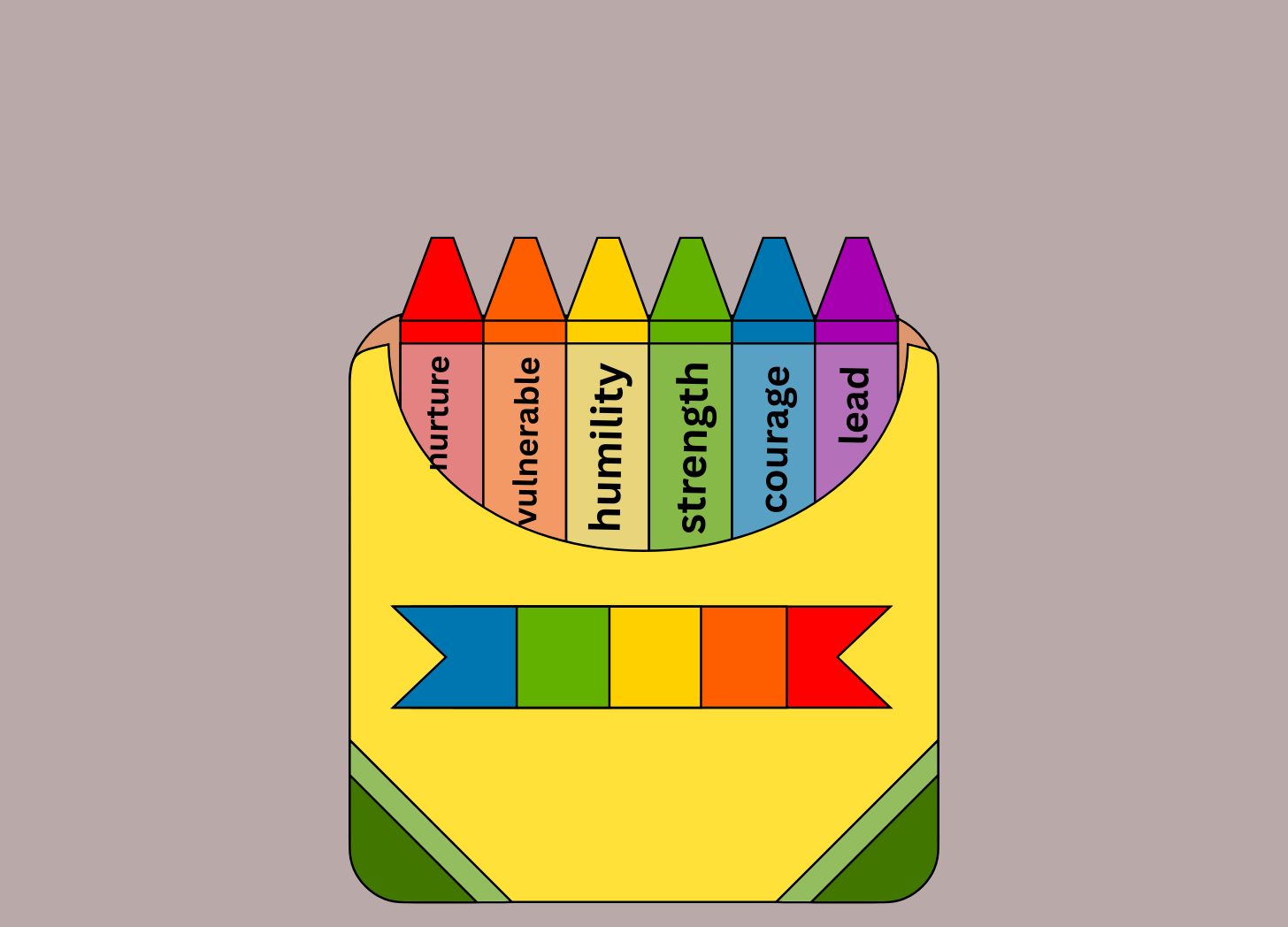
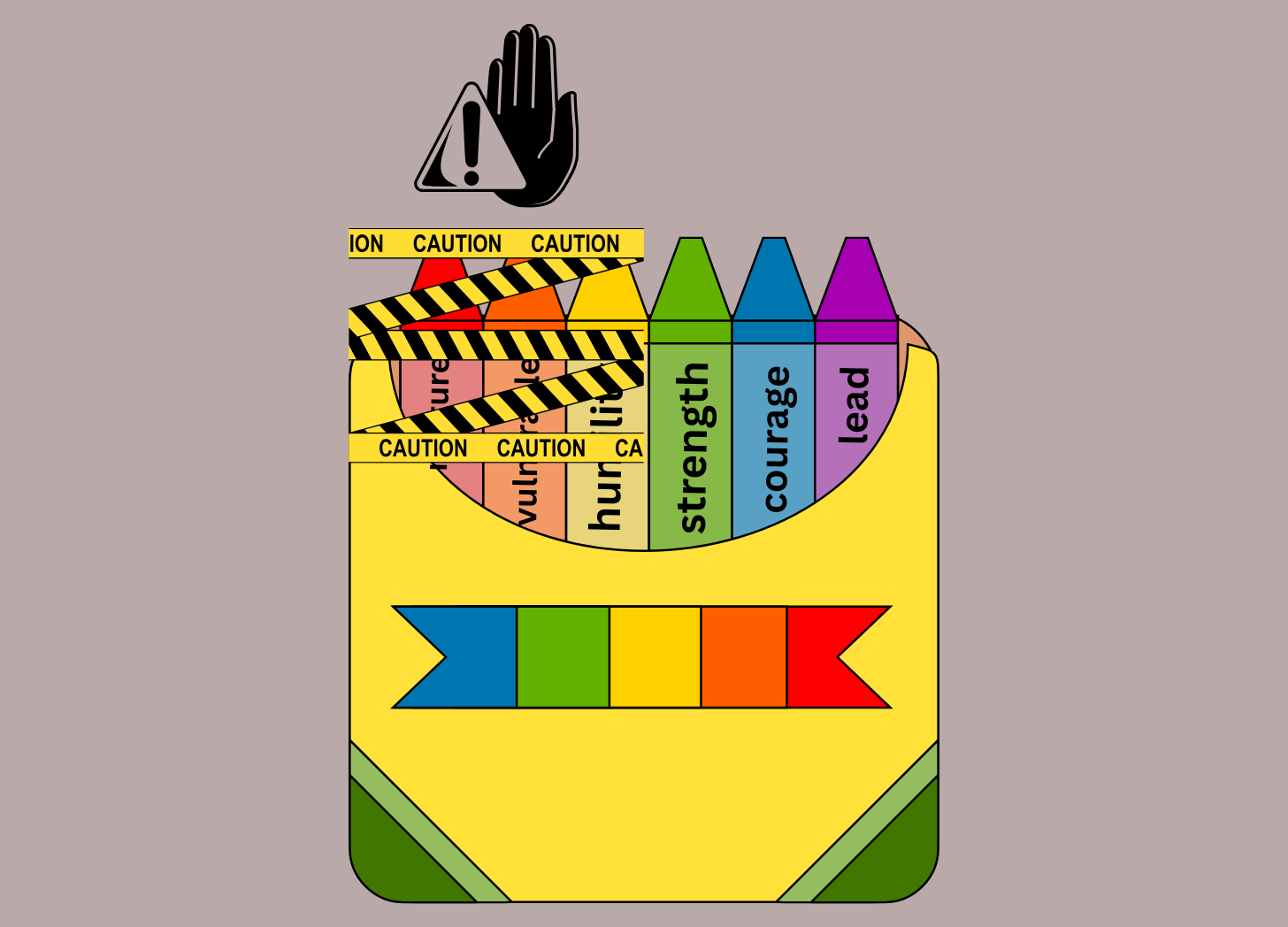
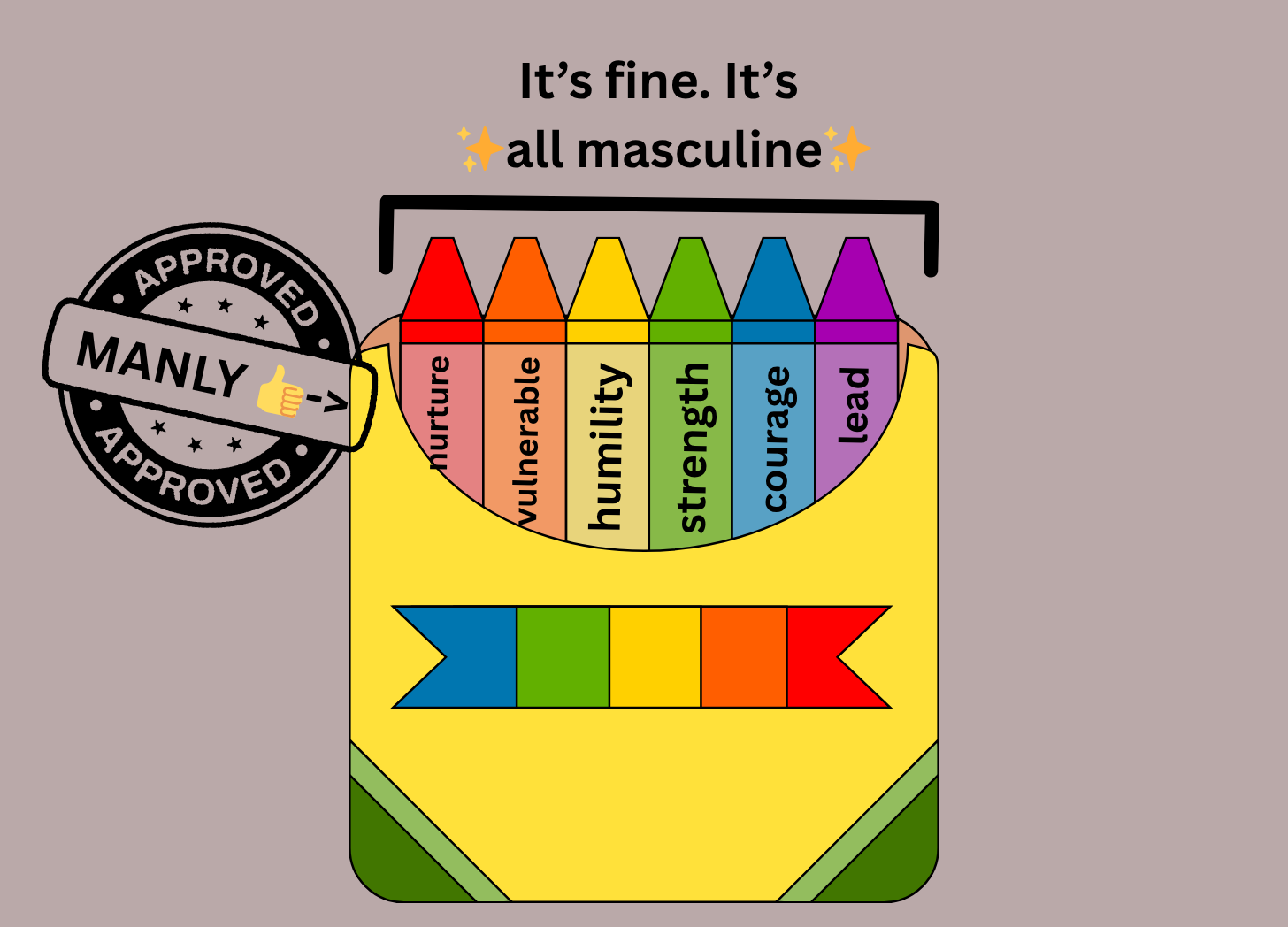
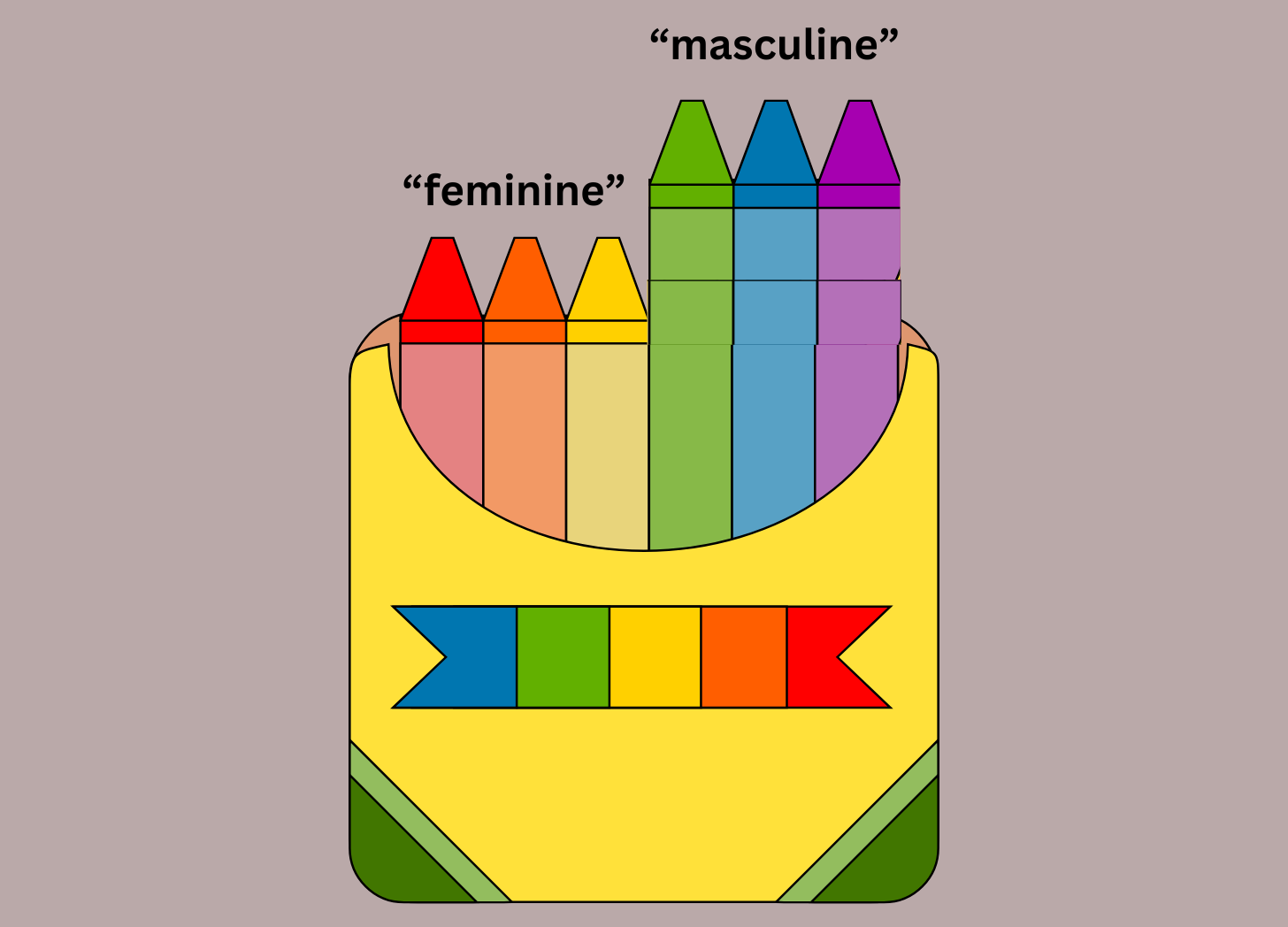
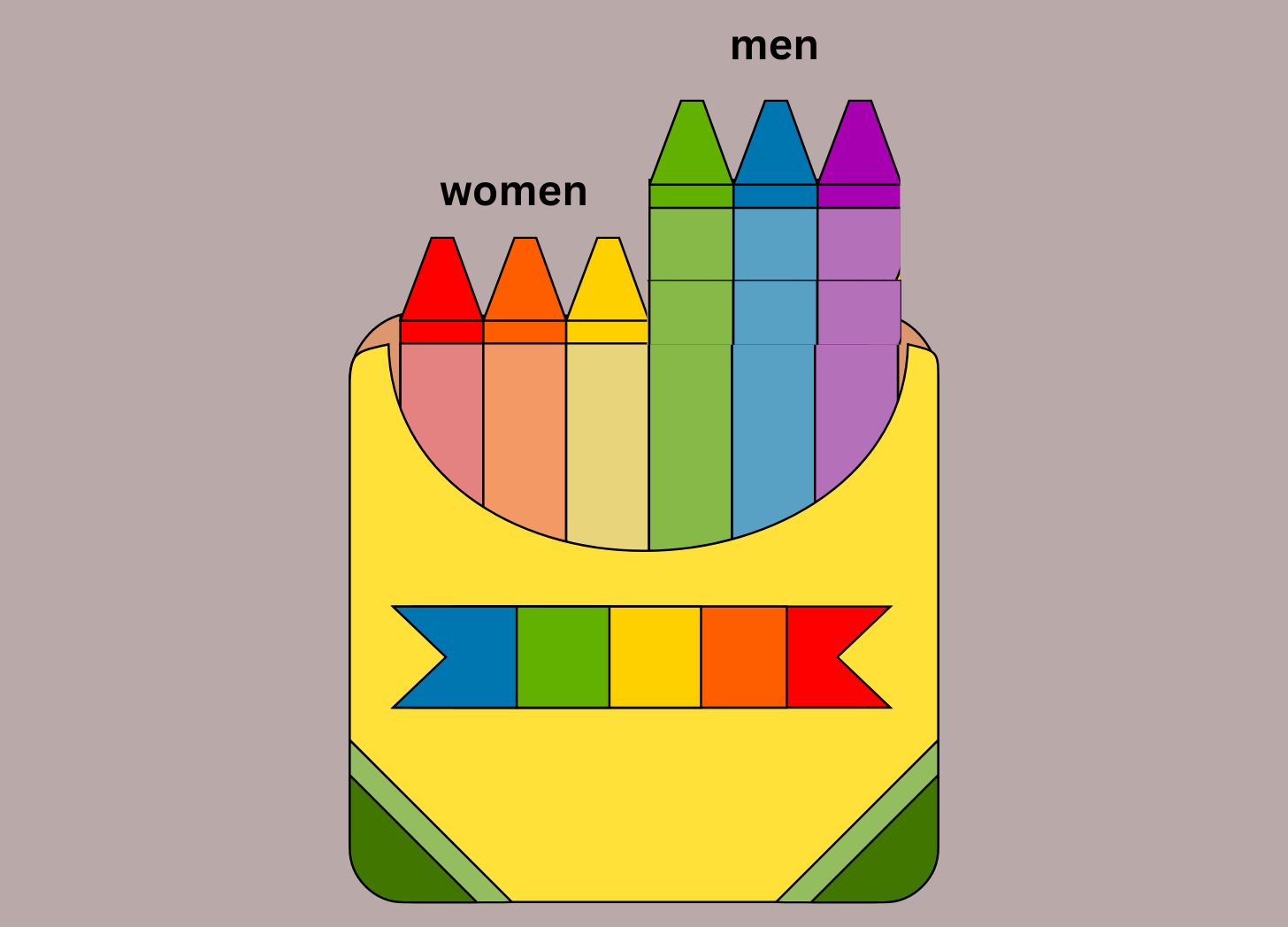
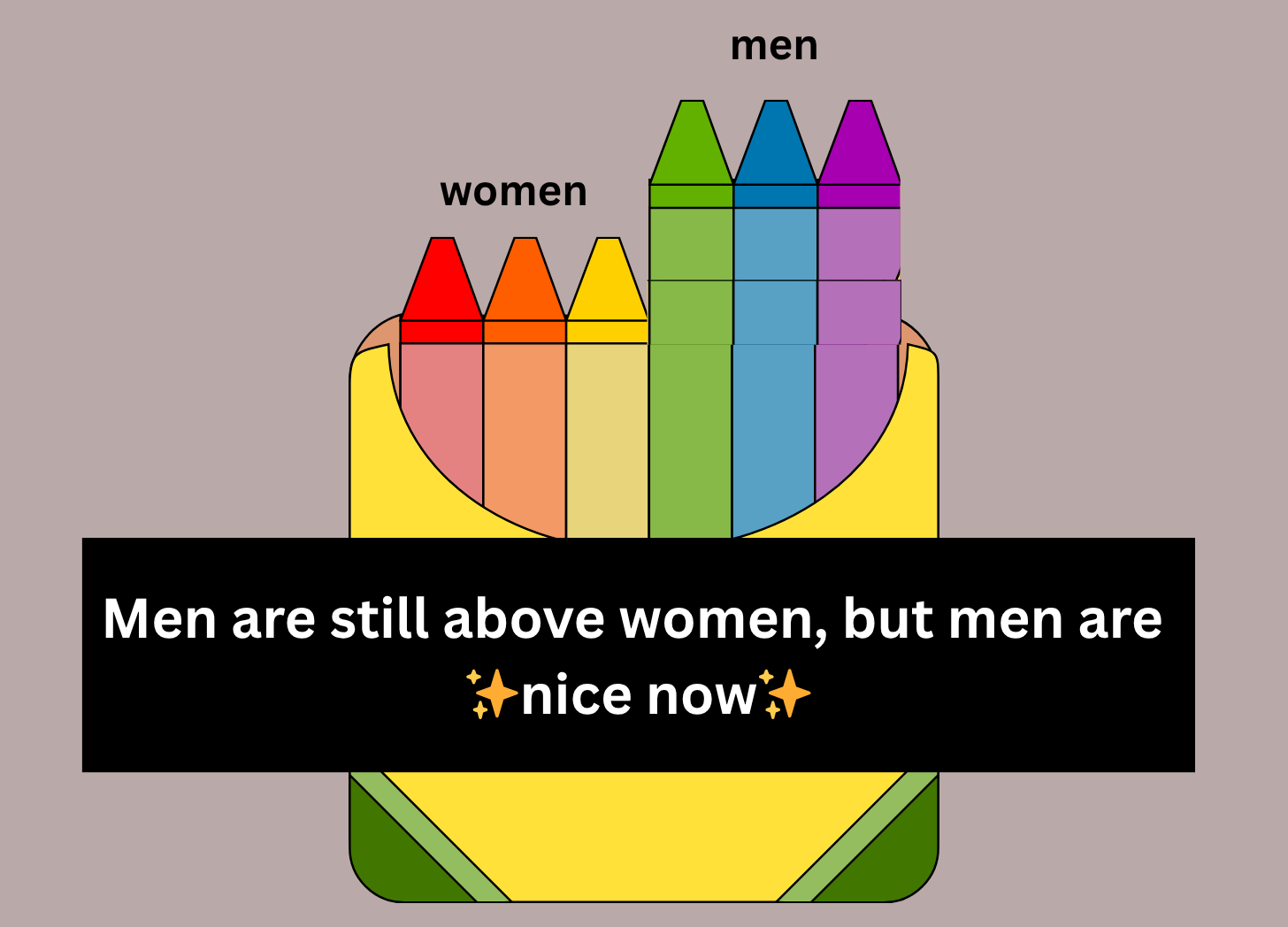
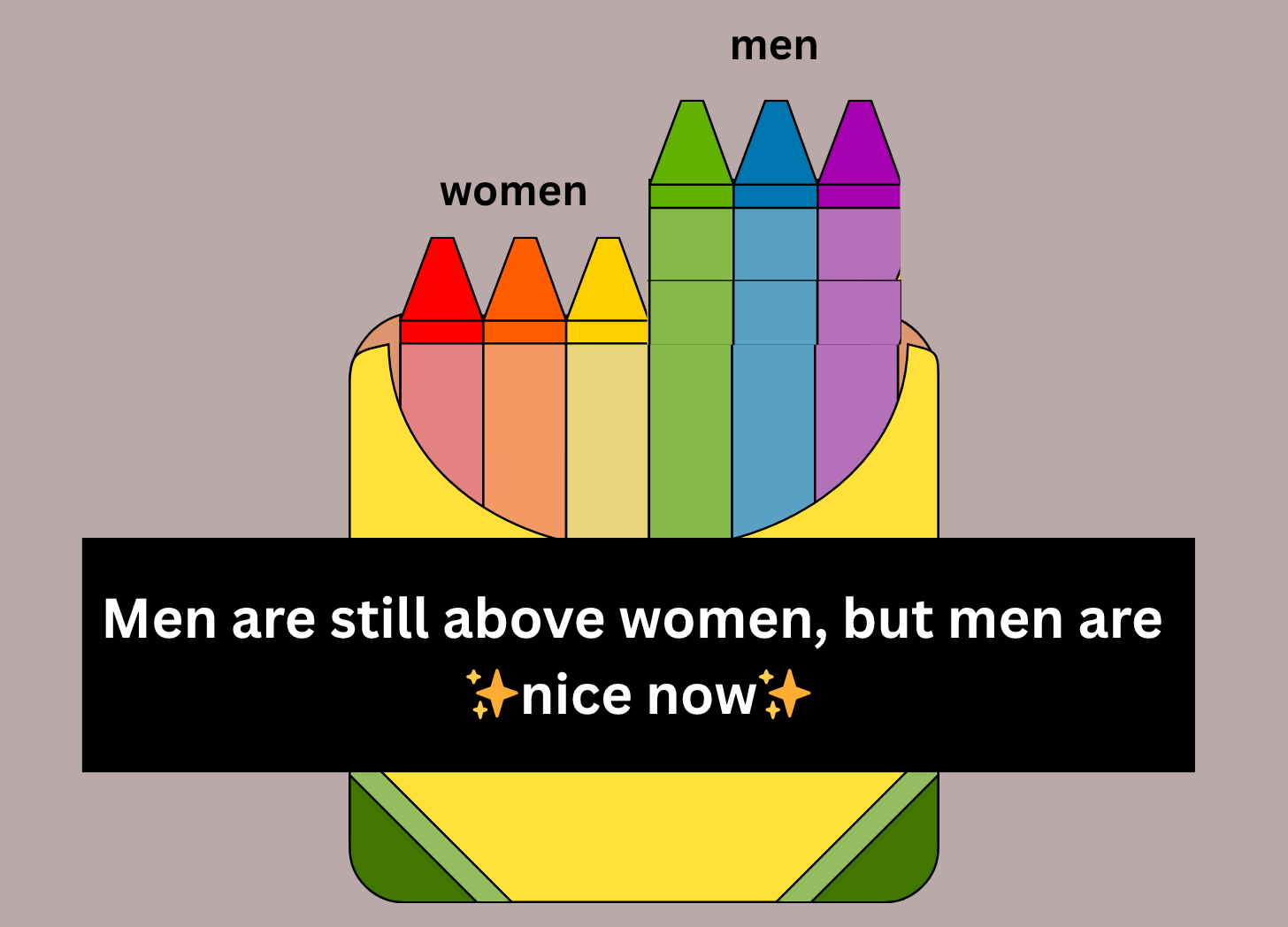
You can put it in terms of race, too: if something has to be coded white to be acceptable (if it can’t be accepted while coded black), then the system itself isn’t acceptable at all.
I first realized this around 2007, when I listened to commentators publicly lose their mind when Obama did something “too black” and Hillary did something “too female.” To them, the political system was only meant for — should only accept — politicians who acted like white men, even when those politicians were not. It was white men who set the baseline for acceptable behaviour. Anyone who deviated from that behaviour by doing something “too Black” or “too female” was open to vicious criticism.
No thanks.
The Musk/Trump breakup is a recent example of the problem. So many have feminized their bickering, likening it to “Mean Girls” scenes and even AOC saying, “The girls are fighting.” We’ve all internalized degrading the feminine as negative and undesirable. Isn’t it simply 2 underdeveloped humans who are used to getting their own way having a very public argument? Their negative HUMAN traits of selfishness, power, control, and entitlement are on full display, and those are traits all humans have to work through, preferably at a much younger age.
Another thought I had was that many have stated that the wives in Secret Lives of Mormon Wives are in lavender marriages because the men seem so feminine. Maybe the benevolent patriarchy in Mormonism that encourages men to develop their more tender, loving sides has confused many other men, even gay men. And yet Mormon wives struggle with a high rate of depression. Could it be that the patriarchal model, even couched as “benevolent,” is the problem? Yes, yes it is.